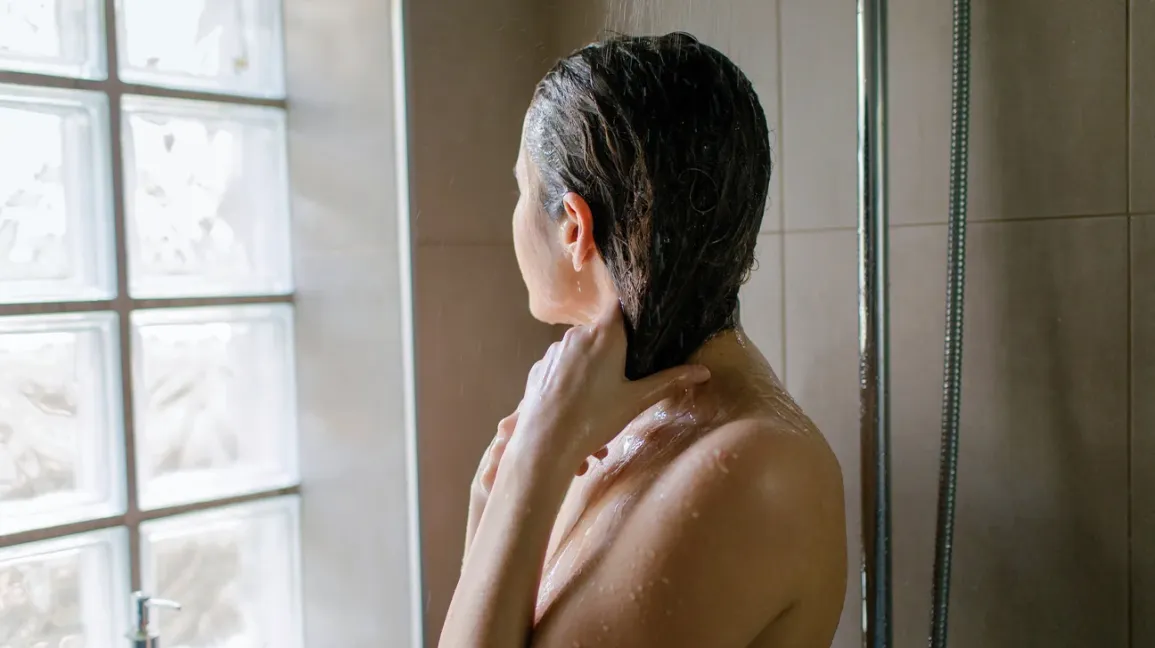Despite taking an extra five minutes in the shower, conditioner is something we’ve all been told to use. Most of us incorporate conditioner into our shampoo routine.
Not only does it help nourish and moisturize your hair, but it also makes it soft, smooth, and manageable. However, using conditioner in the shower is not as simple as applying and rinsing. For best results, it’s important to know the right way to use conditioner in the shower. In this article, we will discuss steps and tips on how to effectively use conditioner in the shower.
Preparing the Hair
Preparing your hair before applying conditioner is an important step in achieving optimal results. Here are key points to consider when preparing your hair in the shower:
- Wet the hair thoroughly: Start by wetting your hair with warm water. This helps to open up the hair cuticles, allowing the conditioner to penetrate the strands effectively.
- Shampooing (optional): Some individuals prefer to shampoo their hair before applying conditioner. If you choose to shampoo, ensure you use a suitable shampoo for your hair type and rinse it out thoroughly before moving on to the conditioning step.
- Squeeze out excess water: Gently squeeze out any excess water from your hair. This allows the conditioner to adhere to the strands better, ensuring proper absorption and distribution.
By following these simple steps to prepare your hair in the shower, you create an ideal foundation for applying conditioner. Wetting the hair, shampooing (if desired), and removing excess water help optimize the conditioner’s effectiveness, leaving your hair moisturized, nourished, and healthy.
Applying the Conditioner
Applying conditioner correctly is crucial for obtaining the best results. Here are the key points to consider when applying conditioner in the shower:
- Choose the right conditioner: Select a conditioner that suits your hair type and specific needs. Whether you have dry, damaged, oily, or color-treated hair, using a conditioner formulated for your specific concerns will provide optimal benefits.
- Squeeze out excess water: Before applying conditioner, gently squeeze out excess water from your hair. This will help the conditioner penetrate the strands more effectively, ensuring better absorption and distribution.
- Dispense an appropriate amount: Take a sufficient amount of conditioner onto your hand. The amount required may vary depending on the length and thickness of your hair. Start with a moderate amount and add more if needed, ensuring even coverage.
- Apply from mid-length to ends: Focus on applying the conditioner from mid-length to the ends of your hair. These areas tend to be drier and more prone to damage. Avoid applying conditioner directly to the scalp, as it can weigh down the hair and make it look greasy.
- Even distribution: Use your fingers or a wide-toothed comb to distribute the conditioner evenly throughout your hair. This will help ensure that all strands receive the nourishing benefits of the conditioner.
- Allow the conditioner to sit: Let the conditioner sit on your hair for a few minutes. This allows the product to deeply penetrate and moisturize the hair, maximizing its effectiveness. Use this time to continue with other shower tasks, such as washing your body or shaving.
Allowing the Conditioner to Work
To reap the full benefits of the conditioner, it is important to allow it to work its magic. Leave the conditioner on your hair for the recommended amount of time, usually mentioned on the product label. This duration allows the conditioner to deeply penetrate your hair shafts, providing the necessary nourishment and moisture.
Rinsing Thoroughly
Once the recommended time has passed, it’s time to rinse off the conditioner. Rinse your hair thoroughly with lukewarm water until all traces of the conditioner are removed. It is crucial to ensure that no residue of the conditioner is left behind, as it can weigh down your hair and make it appear greasy. A good rule of thumb is to continue rinsing until your hair feels clean and silky.
Post-Shower
After showering and conditioning your hair, it’s essential to follow proper post-shower care to maintain the benefits of the conditioner. Here are key points to consider for post-shower hair care:
- Gently towel-dry the hair: After rinsing out the conditioner, avoid rough towel-drying that can cause friction and damage to the hair. Instead, gently squeeze out excess water using a soft towel or an old t-shirt. Patting or blotting the hair is a better option to minimize breakage.
- Apply leave-in conditioner or other styling products (optional): Depending on your hair type and preferences, you may choose to apply a leave-in conditioner or other styling products after towel-drying. Leave-in conditioners provide extra moisture, detangling, and protection from heat styling. Other styling products like serums, creams, or oils can be used to enhance shine, reduce frizz, or add definition.
- Detangle with care: Before combing or brushing your hair, use a wide-toothed comb or a detangling brush to gently remove any knots or tangles. Start from the ends of the hair and work your way up to avoid causing unnecessary breakage.
- Air-dry or use heat styling tools cautiously: To minimize damage, consider air-drying your hair whenever possible. If you prefer using heat styling tools like blow dryers, straighteners, or curling irons, use them on the lowest heat settings and apply a heat protectant spray beforehand.
- Regular maintenance: Maintain the health of your hair by scheduling regular trimmings to remove split ends. Additionally, follow a proper hair care routine, including regular shampooing, conditioning, and occasional deep conditioning treatments.
By following these post-shower care tips, you can help preserve the benefits of the conditioner and promote healthier, more manageable hair. Proper towel-drying, optional leave-in products, gentle detangling, cautious use of heat styling tools, and regular maintenance contribute to the overall maintenance and well-being of your hair.


